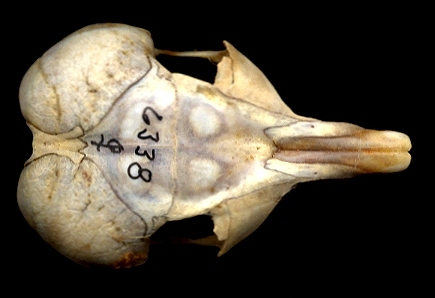

Look at a kangaroo rat's head—it's huge, compared to other rodents. To understand why requires delving into the life style of the rat and the unique flight of owls.
Kangaroo rats' nighttime foraging takes them away from protective cover, making them vulnerable to attack from owls, the stealth bombers of the bird world. Specially adapted feathers allow them to patrol the dark skies in complete silence. That is, until they check their plunge inches from unsuspecting prey, when they produce a very low-frequency sound—a sound below the hearing of most rodents—but not of the kangaroo rat.
Most ears have a small, air-filled chamber that prevents an animal from
detecting low-frequency sound. But in a kangaroo rat, this chamber is huge, allowing it
to hear the owl's drastic slowing an instant before it grabs for the rat. A panic
leap in the microseconds between hearing the owl and death is the only chance for
salvation—and kangaroo rats, with their huge heads, are the only rodents who have that
chance.

Listen to the Audio (mp3 format) as recorded by KTEP, Public Radio for the Southwest.
Contributor: Arthur H. Harris, Laboratory for Environmental Biology, Centennial Museum, University of Texas at El Paso.
Desert Diary is a joint production of the Centennial Museum and KTEP National Public Radio at the University of Texas at El Paso.

Skull of a Banner-tailed Kangaroo Rat (Dipodomys spectabilis). The two large, oblong structures on the left are the greatly enlarged auditory bullae, the air-filled chambers allowing the rodent to make its last minute jump to safety. Scanned image by A.H. Harris.